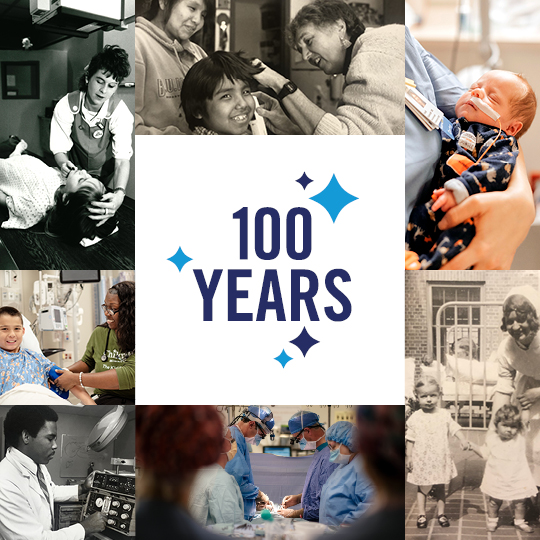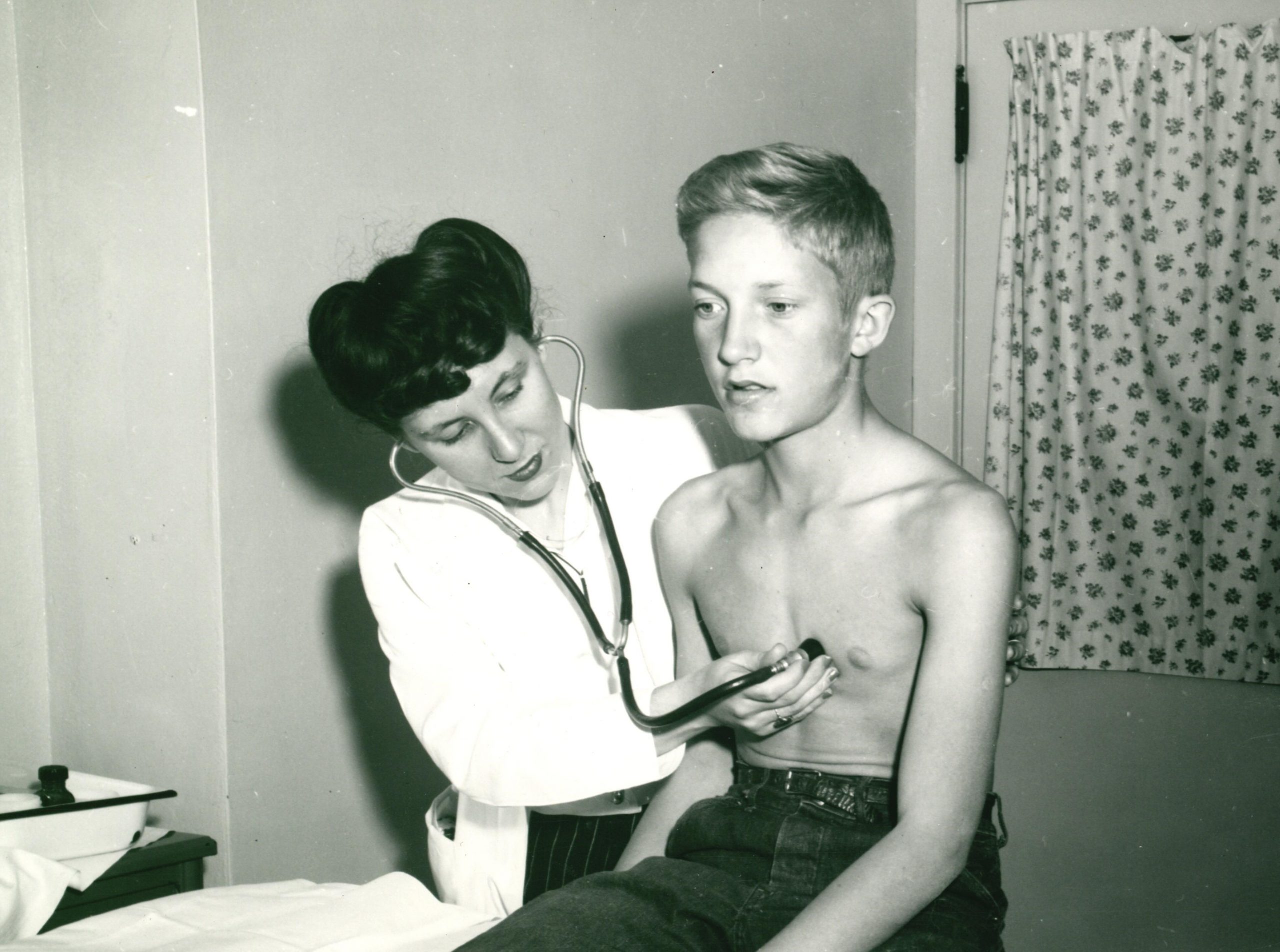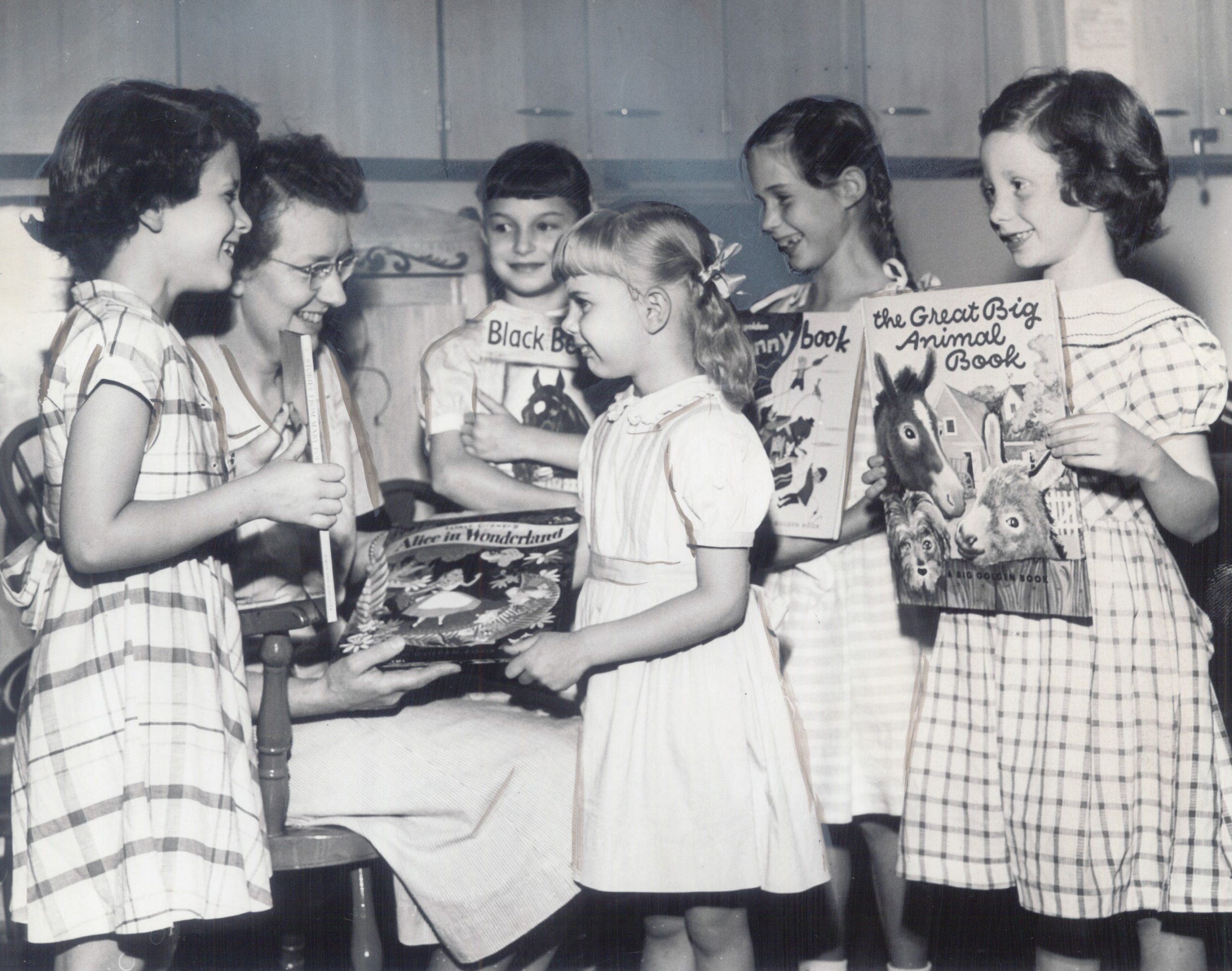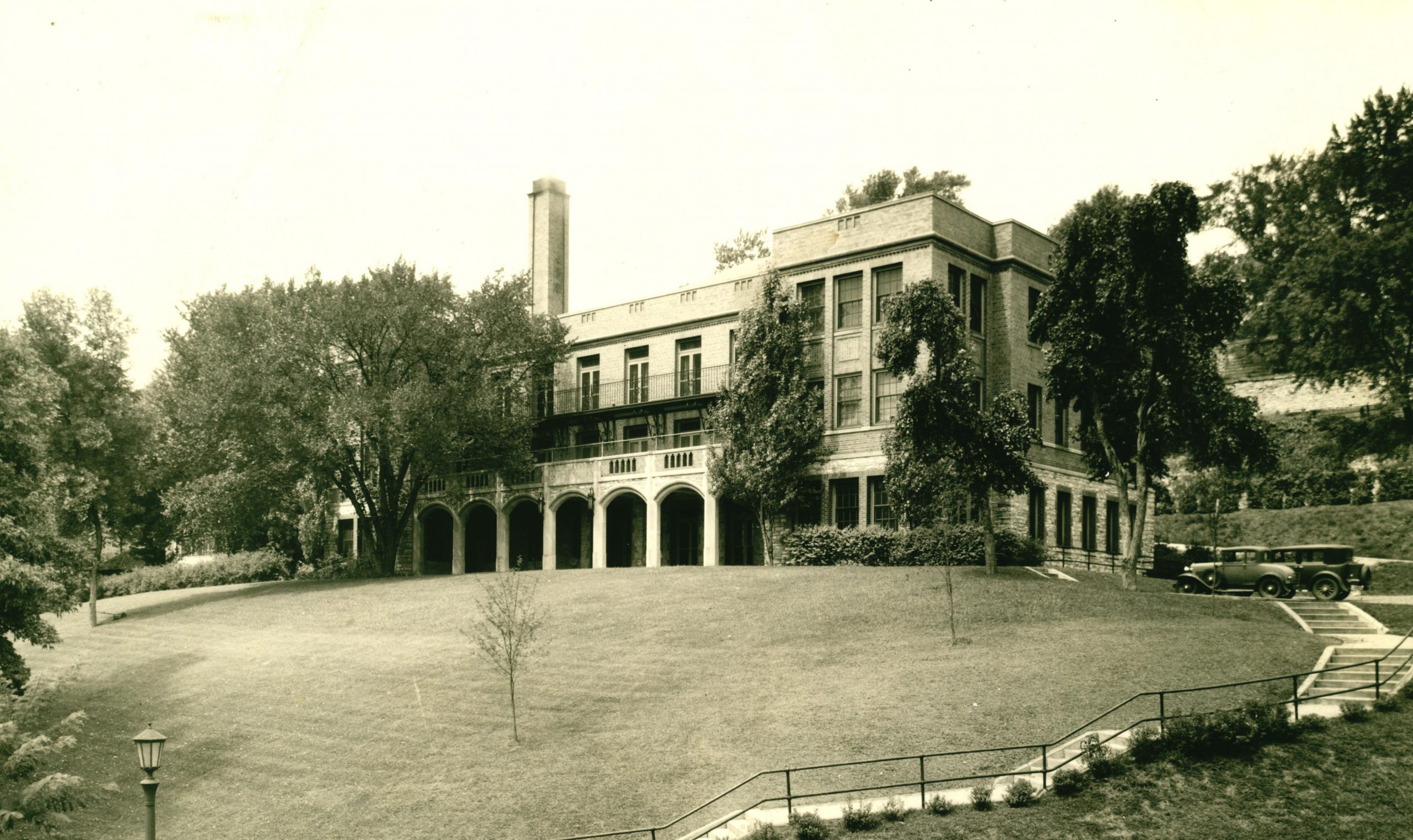for kids

From the archives: Children's Minnesota in the 1940s
The history of Children’s Minnesota is much more than buildings, names and dates. Who were the people behind the facts? What were their struggles and triumphs?
In honor of our 100th anniversary, every month in 2024 we’ll share compelling stories from the Children’s Minnesota archives. Each month will feature a different decade.
Here, we continue with the 1940s, which saw a recovery from the financial crisis of the 1930s, some new challenges brought on by World War II and early talk of a children’s hospital in Minneapolis.
Jump back in time and read about Children’s Minnesota in the 1930s here and the 1920s here.
The 1940s
As the 1940s approached, Children’s Hospital was rebounding from the challenges of the Great Depression and the near closure of the hospital. Staff may have been looking forward to smoother times, but they would have to wait a few more years.
“The busiest year…and…the most turbulent”
According to a booklet about the history of Children’s Hospital:
“The hospital’s annual report for 1942 stated it was ‘the busiest year in its history and certainly the most turbulent.”
The reason was World War II. The United States entered the war at the end of 1941 and by 1942, some staff members were leaving to serve in the military.
In addition, the war was driving up the cost of supplies and making them harder to procure. The booklet explains: “In the five years between 1940 and 1945, the price for hospital supplies rose 40 percent…”


A Children’s nurse goes to war
One of the people who left Children’s Hospital to serve was a nurse named Eleanor Sackett. Her obituary states, “during World War II she served as a nurse with the 54th General Hospital, Mediterranean Theater from 1942-1945. She received the World War II Victory Medal, Meritorious Service Unit Plaques, and the European African Middle Eastern Theater Campaign Ribbon. Upon her honorable discharge, Eleanor returned to Children’s Hospital where she served as administrator, retiring in 1970….”
The war ended in 1945, a year of “change and expansion” for Children’s Hospital. On staff there were:
- 14 pediatricians.
- 9 surgeons.
- 4 orthopedists.
- 13 eye, ear, nose and throat specialists.
- 1 pathologist.
Staff were trying to meet an increasing demand for beds, so a fourth floor was added to the hospital, which was still located at 311 Pleasant Ave. in St. Paul. But in 1948, the second floor of the hospital was closed for a while due to a shortage of nurses.

They are getting well
From its first day up to today, Children’s Minnesota has counted on the generosity of donors to help kids and families who can’t afford care. In 1928, a magazine called “The Farmer” started a philanthropic effort called “The Helping Hand Club.” By 1941, the magazine’s readers had contributed more than $27,500 to the club and helped more than 140 children receive treatment at Children’s Hospital.
The 1941 article below includes letters and pictures from patients helped by the club. You’ll notice that many of the children were treated for “infantile paralysis,” which today we call polio. The Minnesota Department of Health says Minnesotans were “terrified” by polio in the 1940s and 50s. A 1946 polio epidemic forced the rare closure of the Minnesota State Fair. A vaccine was ready by 1955.
Please note: Some language used in this article to describe some medical conditions is considered offensive today.
The article
The Farmer
December 13, 1941
They Are Getting Well
Helping Hand Club’s 14th year is one of greatest service
By F.J. Clark
For the contributors to the Helping Hand club, this Christmas season is a time for special rejoicing. Before the year comes to a close, more children will have been helped in 1941 than during any of the other years since the founding of the Club in 1928. Those who have in their charge the welfare of the children of the Northwest are grateful that the fewer cases of infantile paralysis during the year have made it possible to turn to other types of remedial care that have been neglected.
Readers will remember that in December of 1939 the infantile epidemic made unusual demands on the Helping Hand funds as a longer period of treatment is required for each case. Among the 16 children that have come to The Children’s Hospital so far this year, only one was afflicted with infantile paralysis, a number had been severely burned, several had webbed fingers, three cleft palates, and two what is known as “wry neck.”
The fine spirit to help the less fortunate that has prevailed among our readers throughout the year has provided funds to bring good cheer and hope into the homes of many handicapped children that otherwise would not have received the needed attention. This year, your contributions will reach a total of about $3,000. For the entire time since the beginning of the Helping Hand Club, 141 children have been helped, this help being made possible by your generous giving of $27,549.86 during these years.
Now and then a letter comes to us questioning the existence of a Club that has rendered such an outstanding service to crippled children. In answer to such questioners and to new subscribers who may not know about the Helping Hand Club, we only ask that they read the convincing letters from some of these little children in this issue.
How the Club started
Briefly, this is how the Club started: Back in 1928, The Farmer asked its readers if they would send in nickels and dimes to help a crippled little boy fight his way back to health. So generous was the response that after this boy had been cared for, some $3,000 was left. When asked what should be done with it, our contributors with one accord urged that it be spent to help other needy crippled children. Now it its 14th year, it has rendered a noble service.
Every dollar that comes to the Club goes to pay the board and room at the Children’s Hospital and a few medical supplies for the children while undergoing treatment. The doctors are paid from funds provided by state and federal agencies. It is a splendid arrangement that makes your dollar do the maximum job it is intended to do.
And now we are happy to share with you, in letters and pictures, reports we have received from the children or their parents who can look to the future with renewed hope and confidence because you cared. When the letter is not self-explanatory, for the information of our readers we are stating in parenthesis the ailment for which the child received treatment. Most of these were cared for during the years 1939 and 1940.
Glad tidings
I have improved (infantile paralysis) a lot since I came home a year ago. I entered Appleton High School last September and am a freshman. I get around in school all by myself and go up and down about 60 steps every day. I want to express my appreciation to the Helping Hand Club that made it possible for me to be cared for. –Calvin Sorenson.
I am getting along O.K. At a clinic (infantile paralysis) in Hibbing two weeks ago, they said I had improved and changed a few of my exercises. I am feeling pretty good and do almost everything I want to. I am enclosing a dollar for the Helping Hand Club. –George Grubich.
I think I have been showing more improvement the last few months than any time since I left the hospital, although I still have to use crutches and braces (infantile paralysis). Thanks again for all that you and the Helping Hand have done for me. I sincerely hope that you can keep up this fine work. –Robert Jorges.
I am feeling a lot better since I came home. My hand (hay rope burn) is much better now and I can do almost anything with it. I do owe a great deal to the Helping Hand Club. –Ralph Gustafson.
Laura has improved very much this year and when she walks slowly it can hardly be noticed that there is anything wrong (infantile paralysis). She goes to school every day and is doing fine. We are sure thankful to the Helping Hand Club. –Mrs. Walter Staub.
I weigh 109 pounds now. Have gained about 30 pounds since I was ill a year ago (infantile paralysis). I wish to thank the Helping Hand Club for making it possible for me to walk again. –Jean Sandburg.
We sent our son, Robert, to the hospital because of a double thumb on his right hand. It was removed and now he can wear gloves, write, and cut with scissors. Thanks to the Helping Hand Club. –Mr. And Mrs. Herman Hein.
We are surely thankful for the help given to Judith. She is fine; walks and runs without the slightest limp (dislocated hip). Folks who hear her laugh and say, “Judy can walk,” are surprised at how much a child of 2 ½ years can appreciate. –Mr. and Mrs. George Brandt.
I am getting along fine since I came home. My left hand (burned) is almost perfect. I am very grateful to the Club, and am sending a small gift. –Ruth Brelje.
Little Manfred is getting along just fine. His arm is not normal yet, but is improving right along (infantile paralysis). He often talks about the Children’s Hospital. –Mr. and Mrs. Edgar Fauk.
The action picture I am sending of me playing football shows how much I have improved (infantile paralysis). I can do many other active games that I enjoy. –Lyle Johnson.
Blaine’s arm is gradually improving (infantile paralysis) and he does about everything he wants to. –Mr. and Mrs. O. A. Latcham.
Dickie started using his right hand as soon as the bandage came off. Before one of the double thumbs was removed, he was altogether left-handed. Now he uses his right hand which is almost normal again. –Mr. and Mrs. Clarence Moon.
I really haven’t any words to express my appreciation for all the Club has done for us and our little boy. He is getting along splendidly and we can hardly tell where the (webbed) fingers were separated. –Mr. and Mrs. Raymond J. Maki.
Evelyn is just fine. Her head (wry neck) is straight now since her operation. –Mr. and Mrs. F. Moorhead.
We want to thank the Helping Hand Club for what they have done for Joan (eye correction). –Mr. and Mrs. S. O. Farden.
Geraldine was at the Children’s Hospital for two months and they certainly did wonders for her leg (infantile paralysis). I certainly would like to thank everyone who has contributed to the Helping Hand Club as they surely have given for a worthy cause. –Mrs. Fred Grotjohn.
I am very glad for the help of The Farmer and the Helping Hand Club\. I use my hand (hay rope burn) now as if it was never hurt. –Jerome Palmquist.
Vernon and I are getting along just fine. Our hands (webbed) are getting better every day and we wish to express our appreciation to the Helping Hand Club. –Erma and Vernon Knutson.
It is a nice sunny day and Billy is outside playing instead of sitting in a chair watching from the window as he did two years ago before the Helping Hand Club sent him to the Children’s Hospital (infantile paralysis). We often think of those days and wonder how he would be today if there weren’t clubs like the Helping Hand Club. –Mr. And Mrs. Vernon Goetzman.
As in all giving, that inner glow of satisfaction that comes in having a share in a job well done will be one of the season’s most cherished Christmas gifts to each contributor. The need for the continuance of this work is ever-present and the good which the Helping Hand Club can do in serving handicapped little children is measured by the funds that are available. In behalf of the little folks that will come under the care of the Helping Hand Club during the year ahead, The Farmer as sponsor hopes and expects that, with your continued support, even greater good will be accomplished in 1942.
On the other side of the river
Meanwhile in Minneapolis, a group of pediatricians had begun informal discussions about the need for a children’s hospital, but those discussions were interrupted by World War II. It would be several more years until talks would resume and concrete action would be taken.
Stay tuned to our From the Archives blogs! Next month we’ll feature the 1950s.
Celebrating a century of care: Children’s Minnesota turns 100
Children’s Minnesota has been here for 100 years. And it’s all because of you: the people who bring your kids here, the ones who work here, the partners who refer their young patients for specialty treatment, the donors who support us, and the community who rallies around the families in our hospitals. Join us in celebrating a century of care — and a bright, healthy future for Minnesota kids.
